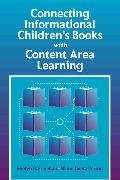Read more
List of contents
Preface.
1.Why Use Informational Children's Books in Content Area Learning?
What We Know About Literature and Learning.
Expository Text.
Limitations of Content Area Texts.
The Integrated Curriculum.
2.Current Trends in Content Area Curriculum.
Science-Theoretical Underpinnings and Curriculum Innovations.
Mathematics - Teaching Standards and Current Theory.
Social Studies - Theory and Curriculum Standards.
Content Area Learning and Critical Thinking.
Summary.
3.Developing an Information Curriculum.
Acquiring an Attitude for Inquiry.
Generating Questions to Explore.
Information-Gathering Strategies.
Problem-Solving Strategies.
Analyzing and Evaluating Information.
4.Informational Books and Content Area Writing.
Different Genres of Writing.
Different Formats for Sharing Information.
5.Informational Books in Integrated Themes of Study.
What Is An Integrated Theme?
To the Top of the World.
A House Divided: America's Civil War Period.
Constructions.
Summary.
References.
Children's Books Cited.
Appendix: Thematic Book Collections.
Discovering What Scientists Do and How They Do It.
How We Can Help Save the Environment.
Immigration.
The Lives of Children Across Time and Place.
All the Creatures of the World.
Seeing Yourself as a Writer and a Language User.
Index.
Summary
This book discusses in detail how children's trade books can be used to achieve the national standards in the content areas (math, science, and social studies). Freeman and Person begin with a concise discussion of the national standards and explain how they translate into usable teaching methods. Each of the new standards is discussed with a focus on how they correlate positively with the use of informational children's books. This book is a wonderful guide - not only to understanding the standards, but to finding practical, innovative ways of achieving them through the use of informational books.
Freeman and Person model methods of encouraging a problem-solving atmosphere of inquiry in the classroom by providing sample lesson plans for various grade levels. They describe how to link content area writing with the use of informational children's books, and how to use these books with integrated thematic units. As each sample unit is presented in detail, many outstanding informational children's books are discussed. This book provides excellent ideas for pre- and in-service teachers for implementing books in the content area curriculum, and most importantly, recommends actual titles that can be used to supplement traditional textbook learning.

